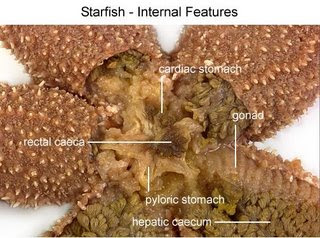1. What is DNA?
-. The blueprint of life, a nucleic acid that contains the genetic instructions used in the development and functioning of all known living organism.
2. What are the 4 bases?
-The four bases are adenine, thymine, guanine and cytosine.
3. What 2 pieces of information did the scientists need to solve the elusive structure of DNA?
-. Phosphate backbone was on the outside with bases on the inside but another that the molecule was a double helix.
4. What are the specific base pairs?
-A.T.G and C. The amount of adenine always equals the amount of thymine. The same goes for the pair guanine and cytosine. For example, human DNA contains about 30 percent each of adenine and thymine, and 20 percent each of guanine and cytosine.
- 5. How does the pairing rule effect the shape and structure of DNA?
- Adenine-thymine pair that make a 2 hydrogen bond and cytosine-guanine pair that make a 3-hydrogen bond. if the bases were paired when the adenine-thymine bond was exactly as long as the cytosine-guanine bond, each rung of the twisted ladder in the helix would be of equal length, and the sugar-phosphate backbone would be smooth..
6. What does the DNA do during cell division?
-during the cell division, the DNA molecule is able to “unzip” into two pieces.
7. How many base pairs does E. Coli have? How long does it take to replicate? How is the DNA packaged in the cell?
-it has about 4,639,221 base pairs and takes about 40 minutes to replicate. E. coli is package in the DNA as eukaryotic chromosomes are into the nucleus cell.
8. How many base pairs does Human DNA have? How long does it take to replicate? How is the DNA packaged in the cell?
- human has 3 billion base pairs DNA, it making up a total of almost 12 to 24hours of DNA in every cell in our body , and human DNA is packaged in 23 distinct chromosome pairs nucleus cell.
1. What is RNA? How different is it from DNA?
- It is a nucleic acid polymer consisting of nucleotide monomers.
Difference: RNA - a single strand, contain ribose sugar, uses predominantly uracil.
DNA - double helix , contain deoxyribose ,uses hymine.
2. How are the RNA messages formed?
-It is formed by the grouping together of 3 of the letters to create a triplet or codon then the triplet or codon line up and form a chain of codes to create a message.
3. How are the RNA messages interpreted?
-. First, the ribosome have read the messages, and then it have to attach the amino acids together then can make up of a protein.
1. Describe cell cycle.
- The cycle of cell growth, replication of the genetic material and nuclear and cytoplasm division. The cell cycle is dived into a G1 (G for gap) phase in which the cell grows; an S (S for synthesis) phase where the DNA is replicated, a second gap phase called G2 and an M phase (for Mitosis) in which the replicated DNA (organized into chromosomes) is separated and the cell divides into 2 daughter cells. Mitosis is dived into Prophase, Prometaphase, Metaphase, Anaphase, Telophase, and cytokinesis.
- The cell cycle is an ordered set of events, culminating in cell growth and division into two daughter cells.
2. What is nuclear division?
-The process of nuclear division of diploid (2N) or haploid (N) eukaryotic cell whereby two daughter nuclei are produced those are genetically identical to the parent nucleus. Mitosis usually results in the production of two progeny cells that are genetically identical to the parent cell.
3. What is interphase.
- The cell cycle stage between nuclear divisions, when chromosomes are extended and functionally active and the metabolically active non-diving stage of the cell cycle.
4. Cytokinesis.
-it is the process whereby the cytoplasm of a single cell is divided to spawn two daughter cells.
5. Homologous chromosomes.
- . A pair of chromosomes made up of two homologs. Homologous chromosomes have corresponding DNA sequences and come from separate parents; one homolog comes from the mother and the other comes from the father. Homologous chromosomes line up and synapse during meiosis
6. Phases of mitosis (5 of them).
-Cytokinesis
-Telophase
-Preprophase
-Prophase
-Metaphase
7. Phases of meiosis and how it is different from mitosis.
- Leptotene
- Zygotene
- Pachytene
-Diplotene
-Diakinesis
-Synchronour processes
-Metaphase
- Anaphase
-Telophase
-Mitosis has eight phases but meiosis has nine prophases and which has six is different than mitosis but three are Metaphase I ,Anaphase I and Telophases I are the same . The difference between the separation in mitosis and metaphase II (meiosis) is that halfing of the number of chromosomes has preceded meiosis II, in contrast to mitosis. Also the meiotic products are genetically diverse with respect to their parent and among each other. This is not the case in mitosis!
8. Describe the process and purpose of crossing over.
- Cross over is a process in which homologous chromosomes exchange parts normally reciprocally but sometimes unequally. The exchange of corresponding chromosome parts between homologues by breakage and reunion of DNA molecules normally during prophase I of meiosis but also occasionally during mitosis.

































